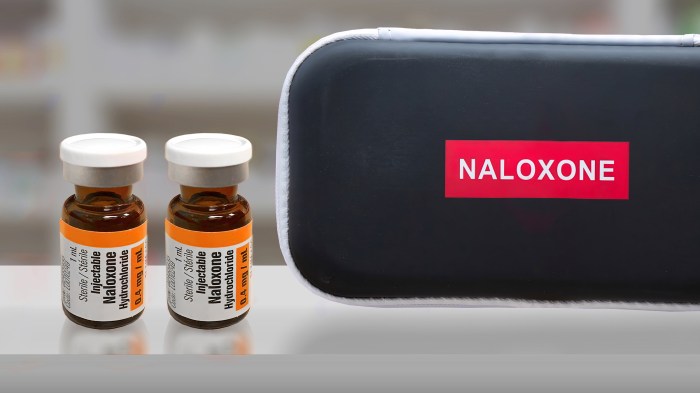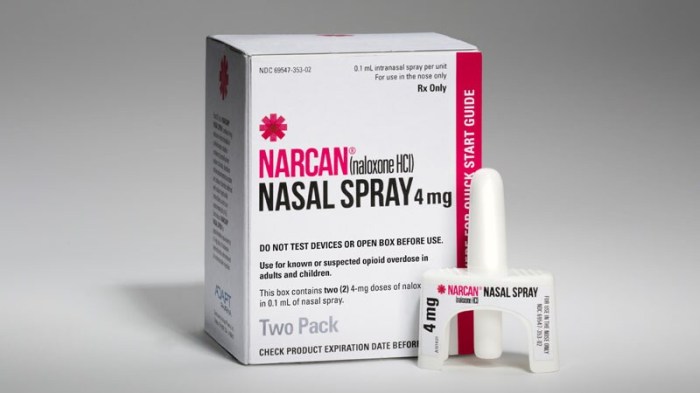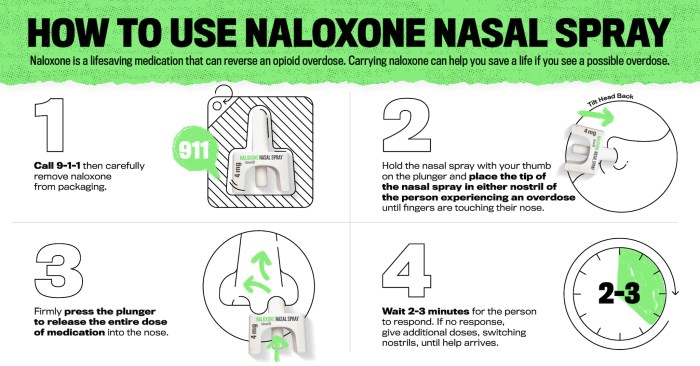After the second dose of naloxone liz, it is imperative to consider the potential consequences and necessary steps to ensure patient safety and well-being. This article delves into the rationale, guidelines, and monitoring strategies associated with administering a second dose of naloxone, providing healthcare professionals with essential knowledge for effective opioid overdose management.
Understanding the mechanism of action of naloxone and its impact on opioid receptors is crucial for comprehending the need for a second dose. This article thoroughly examines these aspects, emphasizing the importance of timely intervention to reverse respiratory depression and prevent life-threatening complications.
Naloxone and Its Mechanism of Action

Naloxone is an opioid antagonist that acts by competitively binding to opioid receptors in the central nervous system, thereby reversing the effects of opioids.
When naloxone binds to opioid receptors, it displaces the opioid molecules, reducing their ability to activate the receptors and produce their effects.
This results in a reversal of opioid-induced respiratory depression, which is the primary cause of death in opioid overdose.
Considerations After the Second Dose of Naloxone

A second dose of naloxone may be necessary if the initial dose does not fully reverse the effects of the opioid or if the person’s symptoms return.
Signs that a second dose may be needed include:
- Persistent respiratory depression
- Decreased level of consciousness
- Return of opioid-related symptoms
Failure to administer a second dose when indicated can result in the person re-experiencing the effects of the opioid overdose, which can be life-threatening.
Monitoring and Management After Naloxone Administration
After naloxone administration, it is crucial to monitor the patient closely for any adverse effects or return of opioid symptoms.
Signs and symptoms to monitor include:
- Respiratory rate
- Level of consciousness
- Vital signs (heart rate, blood pressure, oxygen saturation)
If the patient experiences any adverse effects, such as vomiting, seizures, or cardiovascular instability, appropriate medical management should be provided.
Considerations for Discharge and Follow-Up: After The Second Dose Of Naloxone Liz
Patients who have received naloxone should be discharged only when they are fully awake, alert, and have stable vital signs.
Follow-up care should include referrals to addiction treatment programs and education for the patient and their family about naloxone and its use.
It is essential to emphasize the importance of seeking professional help for opioid use disorder to prevent future overdoses.
Special Populations and Considerations
Specific considerations are necessary when administering naloxone to certain populations, including:
- Children:Dosage adjustments may be required, and administration should be done under medical supervision.
- Pregnant women:Naloxone is safe to use during pregnancy, but monitoring for fetal distress is recommended.
- Individuals with co-occurring medical conditions:Naloxone dosage may need to be adjusted, and potential interactions with other medications should be considered.
Case Studies and Examples

Case studies and examples can provide valuable insights into the successful use of naloxone and its impact on patient outcomes.
These cases can illustrate the challenges and lessons learned in administering naloxone, highlighting its life-saving potential.
Resources and Additional Information

For further information on naloxone, opioid overdose, and addiction treatment, refer to the following resources:
- National Institute on Drug Abuse: https://www.drugabuse.gov/publications/drugfacts/naloxone
- Harm Reduction Coalition: https://harmreduction.org/issues/overdose-prevention/naloxone/
- National Council on Alcoholism and Drug Dependence: https://www.ncadd.org/naloxone
Detailed FAQs
What are the signs and symptoms that indicate the need for a second dose of naloxone?
Signs and symptoms include persistent respiratory depression, decreased level of consciousness, and inadequate response to the initial dose of naloxone.
How long should patients be monitored after receiving naloxone?
Patients should be monitored for at least 2 hours after receiving naloxone, or longer if they have received multiple doses or have co-occurring medical conditions.
What are the potential risks and benefits of administering a second dose of naloxone?
Potential risks include precipitated withdrawal symptoms, while benefits include reversing the effects of opioids and preventing respiratory depression.